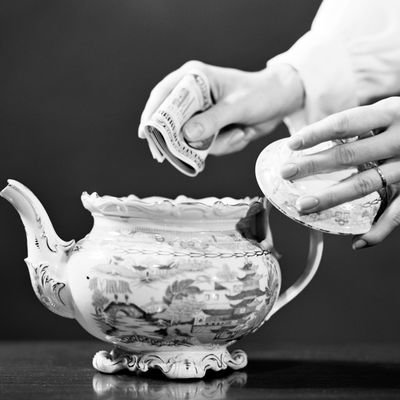
I’m not naturally good at saving money. I used to think this was a personal weakness, but now I understand that it’s pretty normal. It’s not a natural impulse to squirrel away our paychecks for a vague, hypothetical future when there are so many nice things to buy here and now (not to mention scary bills piling up). But because our social structure demands that we save money to live comfortably and not become a burden to our family and friends, we have to make ourselves do it. If only it were that easy.
Psychologists have dedicated decades and millions of dollars researching ways to get people to spend less and save more, with mixed results. Up until now, the dominant and most widely tested theory is that people need more financial education to make better choices with their money — which isn’t untrue, certainly. But information only gets you so far. A simple Google search will say that you should be saving between 10 and 20 percent of your income, but the average American only saves 7.9 percent. Most of us know what we’re supposed to do, but thanks to a mishmash of circumstances, systemic problems, and normal human weakness, we can’t seem to do it.
But what if, on a certain level, we’re going about it all wrong? What if the most effective trick for saving money isn’t about facts or math, but embracing emotions — sappy, sentimental, huggy feelings (ironically, the very “weaknesses” that some researchers have blamed for our bad financial decisions in the first place)? That’s what a group of psychologists attempted to find out in a study recently published in the Journal of Financial Planning. The theory: that incorporating emotional attachments into savings goals, and reinforcing those attachments with concrete, visual objects, would make people more likely to reach them than basic financial education alone. And it worked — amazingly well.
To conduct the study, researchers broke 102 test subjects into two random groups. One group underwent a basic financial education course accompanied by a question-and-answer session. Members of the other group were instructed to bring an item of “personal, nostalgic significance,” and then talk about their savings goals and link those goals to the item. They were then told to keep the item in a place where they’d often see it — at their desk, for example. Three weeks later, the first group had increased its average savings rate by 22 percent — not bad! But members of the second group had increased theirs by a whopping 78 percent.
Eager to incorporate this magical realism into my own life, I immediately tried to come up with an object that I could endow with my own financial responsibility. A piece of my mom’s jewelry? My favorite pen? A special rock? Nothing seemed quite right. Discouraged, I asked Brad Klontz, one of the authors of the study, what his test participants had brought, and he rattled off a list of stuffed animals, photographs, and small heirlooms. “Most of it wasn’t really valuable in a monetary sense,” he told me. “The common thread was that almost all of them were related to family or loved ones.” Overall, the object itself wasn’t that important — what mattered was the larger picture, or value, that it signified.
“The point of the object is to conjure up imagery and emotions that are related to your savings goal, which usually involve people you care about, and then help bridge the gap between that future and your current life,” he said. “There’s nothing more boring and less inspirational than a savings account. You’re basically denying your current pleasure for this amorphous thing in the future. But if you create these bridges and make them very visual, it’ll keep you on track even when it’s very hard to see the bigger picture.” For instance, he encourages clients to name savings accounts after specific things that are important to them. “If I have an account titled ‘Ethan’s college fund,’ it’s going to be much harder for me to take money out of it to buy a boat,” he explained.
Of course, I was still hung up on what my object should be. So I called Meghaan Lurtz, a professor at Kansas State University who also worked on the study, to get her take. She reassured me that I could make a vision board instead — which took the pressure off finding the perfect item and could also be more explicitly associated with my goals (save up for a trip to Sweden this summer, invest in at least one piece of affordable art for my apartment, buy nice food to host dinners instead of going out to restaurants, max out my retirement contributions for the year).
“A little figurine or whatever can work, but I think vision boards are even better, because they’re clear and obvious,” Lurtz said. “The most important thing is to put it in a prominent place, so that it reminds you every day that you’re making steps in the right direction.” Her own vision board hangs next to her desk, directly above her computer. It includes pictures of European cities that she’d like to visit with her husband as well as photographs of her condo (she said she hopes to increase her mortgage payments this year). “I also have pictures of colleges on there, because I’d like to be able to pay for my daughter to go to school,” she said. “Whenever I feel like shopping online, it’s right there, reminding me what’s more important and showing me where my money is going instead.”





